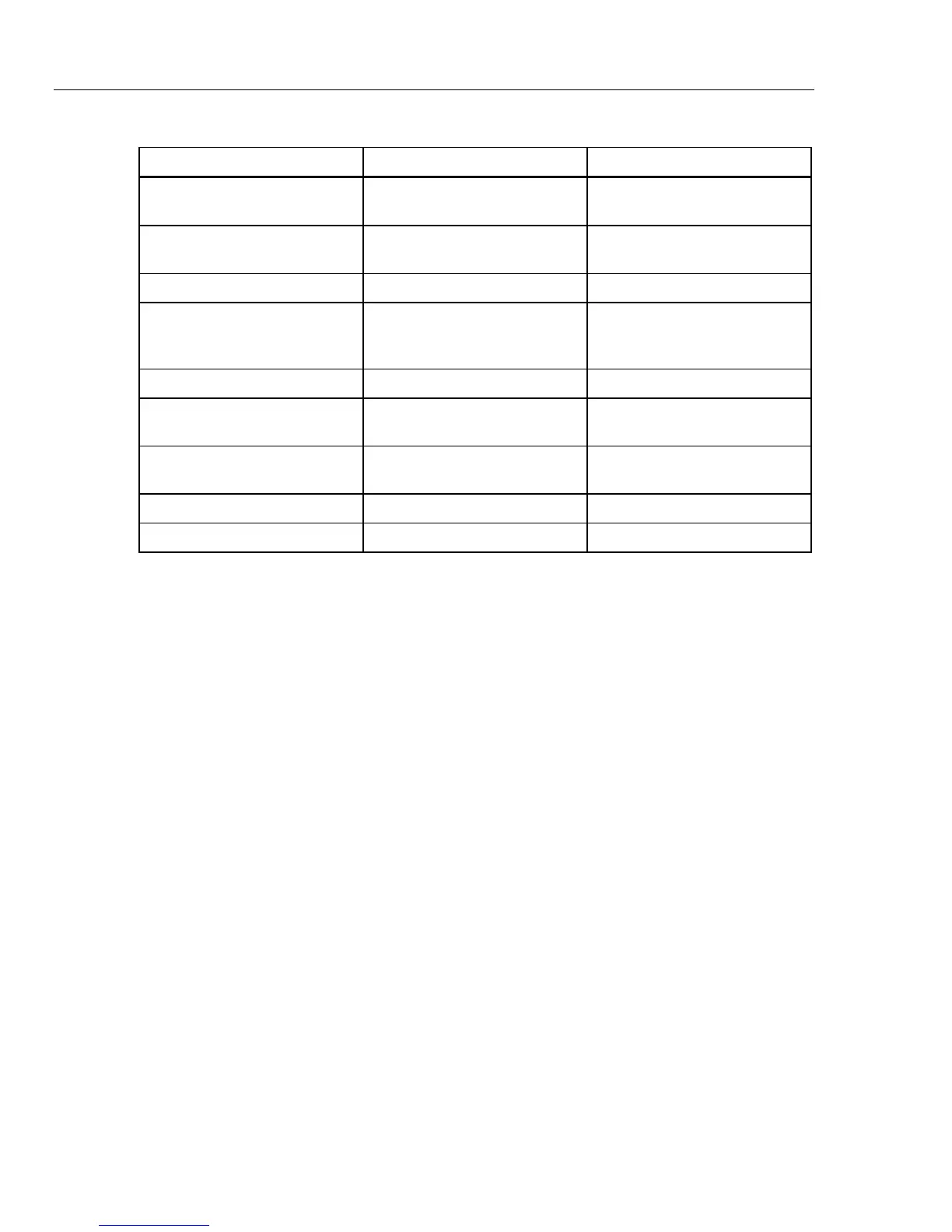8845A/8846A
Programmers Manual
26
Table 6. Description of Bits in the Questionable Data Register
Bit No. Name True (Set to 1) Condition
0 Voltage Overload
Input voltage has exceeded the
upper limit of the range.
1 Current Overload
Input current has exceeded the
upper limit of the range.
2 – 8 Not Used
9 Ohms Overload
The resistance measurement has
exceeded the upper limit of the
range.
10 Not Used
11 Limit Test Fail Lo
The measurement is below the
low end of the test limit.
12 Limit Test Fail Hi
The measurement is above the
high end of the test limit.
13 Remote Mode The Meter is set in remote mode.
14 – 15 Not Used
Status Byte Register
The Status Byte Register (STB) is a binary-encoded register that contains eight bits. Note
that the Service Request Enable Register (SRE) uses bits 1 through 5, and bit 7 to set, the
request service (RQS) bit 6, as enabled by the SRE. When the RQS bit is set true (l), the
Meter sets the SRQ line true (1), which generates a service request. The eight bits of the
Status Byte Register (as read by the *STB? command) are described in Table 7.
Reading the Status Byte Register
The host can read the Status Byte Register by performing a serial poll, or sending the
Meter a *STB? query. The value of the status byte is not affected by the *STB? query.
When the Status Byte Register is read, an integer is returned. This integer is the decimal
equivalent of an 8-bit binary number. For example 48 is the decimal equivalent of the
binary 00110000, and means that bit 4 (Message Available) and bit 5 (Standard Event)
are set to “1”.
If the status byte is read by serial poll, bit 6 is returned as a request service (RQS); if it is
read with an *STB? query, bit 6 is returned as Master Summary Status (MSS).
EXAMPLE EXPLANATION
*STB? Reads the Status Byte Register. Assume that “32” is returned. Converting 32
to the binary 00100000 indicates that bit 5 (Standard Event) is set to 1. To
determine the event status, you would have to read the Standard Event
Register in the same manner, using the *ESR? command.

